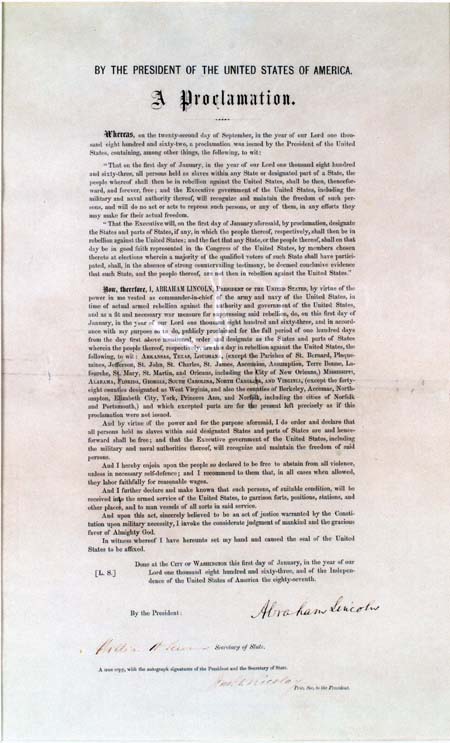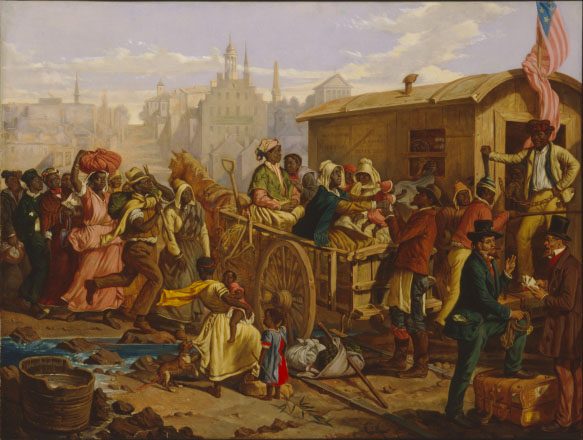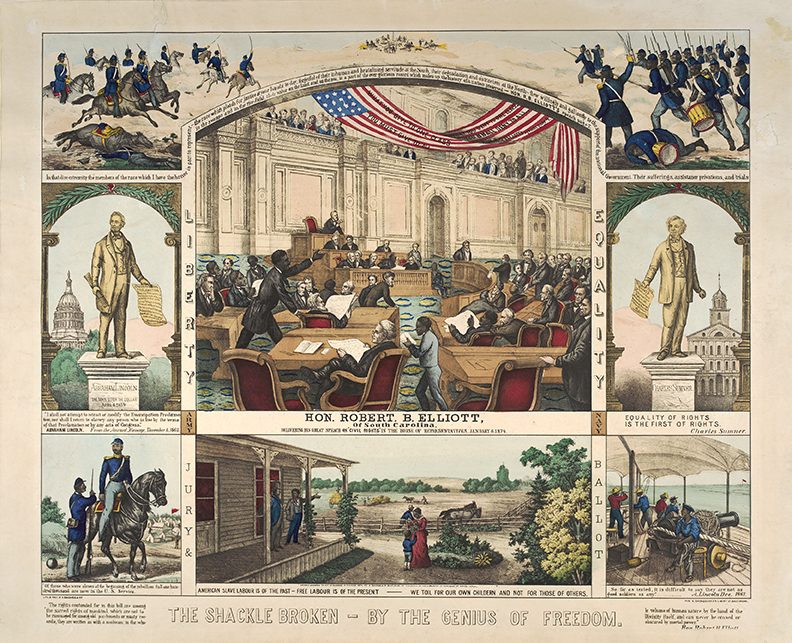This post was published in 2013.
Beginning Saturday, November 9, 2013, the Museum will host a national treasure: a printed copy of the Emancipation Proclamation signed by Abraham Lincoln, Secretary of State William H. Seward, and John G. Nicolay, Lincoln’s private secretary. The document has been generously lent by the Abraham Lincoln Presidential Library and Museum in Springfield and will be on view at the Museum through January 5, 2014. It is one of forty-eight copies printed for sale at the 1864 Philadelphia Sanitary Fair with proceeds aiding wounded veterans. Each document bore the signatures of Lincoln, Seward, and Nicolay, and only twenty-six copies are known to exist.

Printed copy of the Emancipation Proclamation, signed by Lincoln, Seward, and Nicolay, 1864. Courtesy of the Abraham Lincoln Presidential Library and Museum. Gift of Jesse Jay Ricks, 1937
Of far greater significance, however, is how the Emancipation Proclamation changed the course of American history. Lincoln issued the proclamation on January 1, 1863, nearly two years into the Civil War. The Constitution protected slavery, but Lincoln used his power as commander in chief to declare freedom for more than three million Southern slaves. Lincoln’s decree also called for the enlistment of black soldiers and directed Union troops to protect black freedom as they entered and occupied rebel territory. The Emancipation Proclamation gave the war a higher moral purpose of human freedom and eventually led to the Thirteenth Amendment abolishing slavery in 1865, followed by the Fourteenth Amendment, which extended citizenship to African Americans, and the Fifteenth Amendment, which granted equal voting rights to African American men.
In addition to the Emancipation Proclamation, the exhibition features two significant pieces from the Museum’s collection depicting conditions before and after Lincoln’s presidency. The exhibition closes Sunday, January 5, 2014.

After the Sale: Slaves Going South from Richmond, 1853
Eyre Crowe, oil on canvas, CHM purchase, 1957.27, ICHi-052422
This painting shows a group of recently sold slaves being forcibly moved from Richmond, Virginia, to work on large plantations in the Deep South. Such events often involved the painful breakup of families, as illustrated by the central figures. By 1850, the United States had approximately four million African American slaves, more than any other country in the world.

The Shackle Broken by the Genius of Freedom, 1874
E. Sachs & Co., Baltimore, color lithograph, X.2572.2004, ICHi-022125
This print portrays South Carolina Congressman Robert B. Elliott speaking in support of the bill that became the Civil Rights Act of 1875. The act guaranteed African Americans equal access to public accommodations and prohibited their exclusion from jury service. Below Elliott, the artist depicted a free black family with the caption, “We toil for our own children and not for those of others.” Notice the figure of Abraham Lincoln standing on the left, holding the Emancipation Proclamation.
To learn more about Abraham Lincoln and the Emancipation Proclamation, visit: